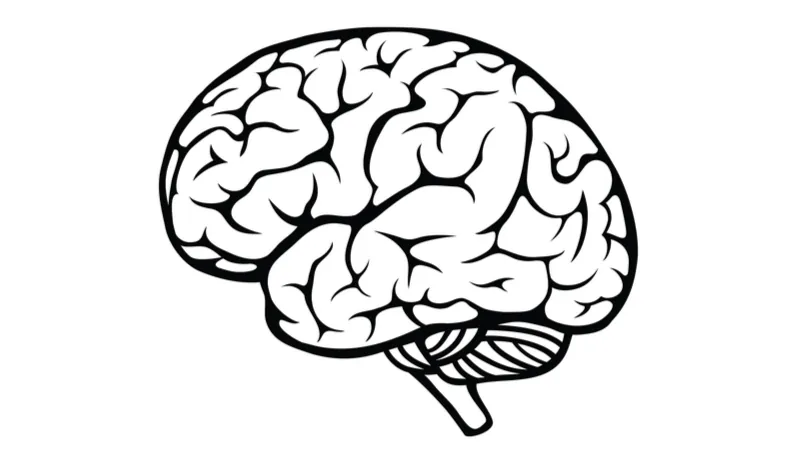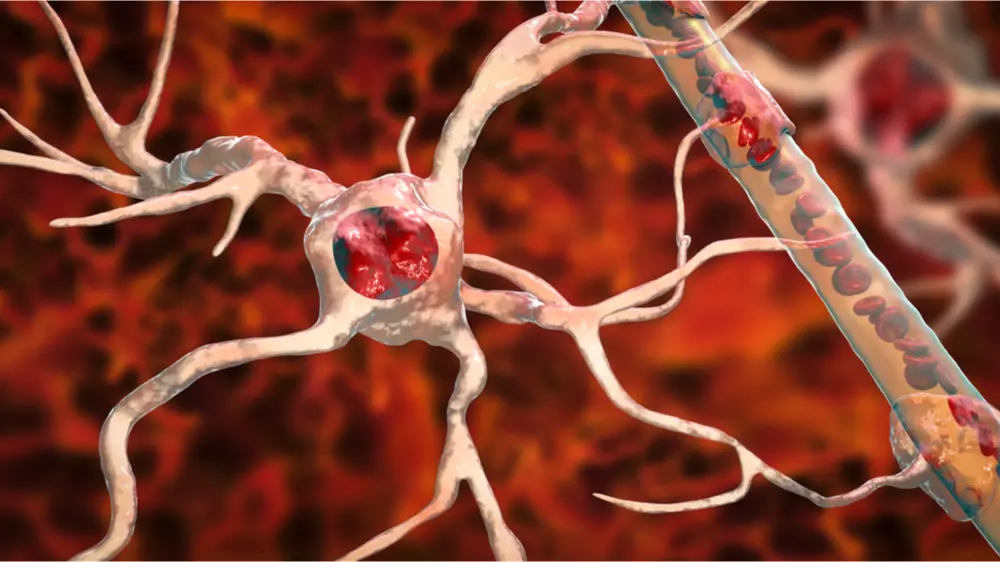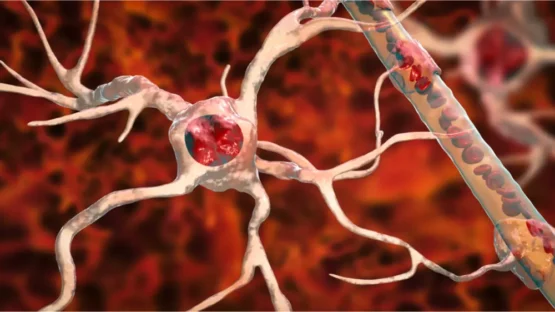Publishing in Aging, a team of Chilean researchers has described a relationship between gene shifts in the brain and neurons not getting the energy they need.
Greedy glia

Read More
To perform various maintenance and protective tasks, the brain contains a large population of microglia alongside its neurons. These glia include astrocytes, which, among their many other tasks, are responsible for aiding neurons with metabolism. For example, after a neuron fires, the glutamate used in that firing is taken up by an astrocyte, processed into glutamine, and then given back to the neuron for re-conversion into glutamate [1].
Another part of this metabolic symbiosis involves how astrocytes use glucose. An astrocyte can either use aerobic glycolysis to convert pyruvate into lactate, which neurons use for fuel [2], or it can perform oxidative phosphorylation to use that energy for itself.
With aging, the astrocytes take more of this energy for themselves. In 76-year-olds, astrocyte mitochondria become about 30% more active, and neural mitochondria become about 30% less active, compared to 24-year-olds [3]. That discovery led this research team to determine the genetic and biochemical reasons behind this metabolic shift.
Gene expression analysis offers insights
This research team used existing databases of gene expression to begin their analysis. Some data involved the fundamental genes involved in metabolism in astrocytes and neurons, other data was focused on neurotransmission genes, and yet another database was on gene expression changes with brain aging. Therefore, the question “What genes change with aging and are involved in this process?” was relatively straightforward to answer.
This, however, is a very large set, so the researchers drilled down into the data, conducting a thorough analysis with modern tools to delve deeply into the metabolism of the brain, checking the veracity of their model against known biochemical facts, and confirming the metabolically symbiotic relationship between astrocytes and neurons in detail.
The researchers found that, with aging, the genes responsible for a key part of energy use, the citrate cycle, were upregulated in astrocytes. Their mitochondria were processing more NAD+, and, as expected, they were creating less lactate to feed to neurons. Ketone body processing (ketosis) was upregulated as well, and metabolism involving the “one-carbon pool” was also increased.
On the other hand, neurons start leaning away from the citrate cycle of metabolism. Synaptic activity, too, was downregulated, and ketosis also appeared to be impaired. Branched-chain amino acid processing was also down, as was the “one-carbon” set of molecules. In short, aging neurons appear to suffer from an across-the-board downregulation of metabolism.
Has a target been found?
Despite all these differences, one particular gene, dld, was found to be downregulated in both astrocytes and neurons with aging. This gene is responsible for the processing of branched-chain amino acids, plays roles in other biochemical processes, and is only downregulated during aging rather than as an effect of neurotransmission. Therefore, these researchers hold that it is a prime candidate for potential interventions.
This was a gene expression analysis of databases, not a controlled study of any kind. Cellular and animal studies should be conducted to determine if dld is truly a valid target and if upregulating this gene encourages astrocytes to be less greedy.
Literature
[1] Magistretti, P. J., & Allaman, I. (2015). A cellular perspective on brain energy metabolism and functional imaging. Neuron, 86(4), 883-901.
[2] Mächler, P., Wyss, M. T., Elsayed, M., Stobart, J., Gutierrez, R., von Faber-Castell, A., … & Weber, B. (2016). In vivo evidence for a lactate gradient from astrocytes to neurons. Cell metabolism, 23(1), 94-102.
[3] Boumezbeur, F., Mason, G. F., De Graaf, R. A., Behar, K. L., Cline, G. W., Shulman, G. I., … & Petersen, K. F. (2010). Altered brain mitochondrial metabolism in healthy aging as assessed by in vivo magnetic resonance spectroscopy. Journal of Cerebral Blood Flow & Metabolism, 30(1), 211-221.



